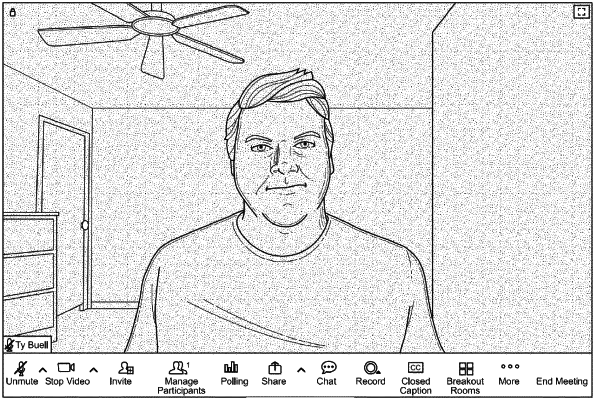| CPC H04N 7/157 (2013.01) [G06F 3/04847 (2013.01); G06F 18/241 (2023.01); G06T 7/40 (2013.01); G06V 40/171 (2022.01); H04L 65/403 (2013.01); H04L 65/762 (2022.05); H04N 9/643 (2013.01); G06T 2207/20028 (2013.01); G06T 2207/30201 (2013.01)] | 18 Claims |

|
1. A method for providing video appearance adjustments within a video communication session, comprising:
receiving video content within the video communication session of a video communication platform, the video content having multiple video frames;
receiving, from a client device associated with a user, an appearance adjustment request comprising an adjustment depth,
wherein the adjustment depth indicates a degree of smoothing to be applied and the adjustment depth determines a threshold for whether a given skin area is to be classified as a smooth texture region as compared to a rough texture region for the smoothing, and
wherein the adjustment depth includes a lighting setting for detecting a low light environment originating from behind the user;
detecting imagery of the user within the video content;
detecting a face region within the video content;
segmenting the face region into a plurality of skin areas by:
segmenting the face region into discrete regions; and
segmenting each discrete region into skin regions based on skin tone;
for each of the plurality of skin areas, classifying the skin area as either the smooth texture region or the rough texture region based on the adjustment depth;
for each skin area classified as the smooth texture region, modifying the imagery of the user by applying a bilateral filtering process to the skin area,
wherein an amount of bilateral filtering applied corresponds to the adjustment depth, and
wherein modifying the imagery of the user is performed in substantially real time upon receiving the appearance adjustment request; and
adjusting, based on the light setting, an illumination associated with the user by diffusing light to achieve at least a semi-evenly lit space.
|